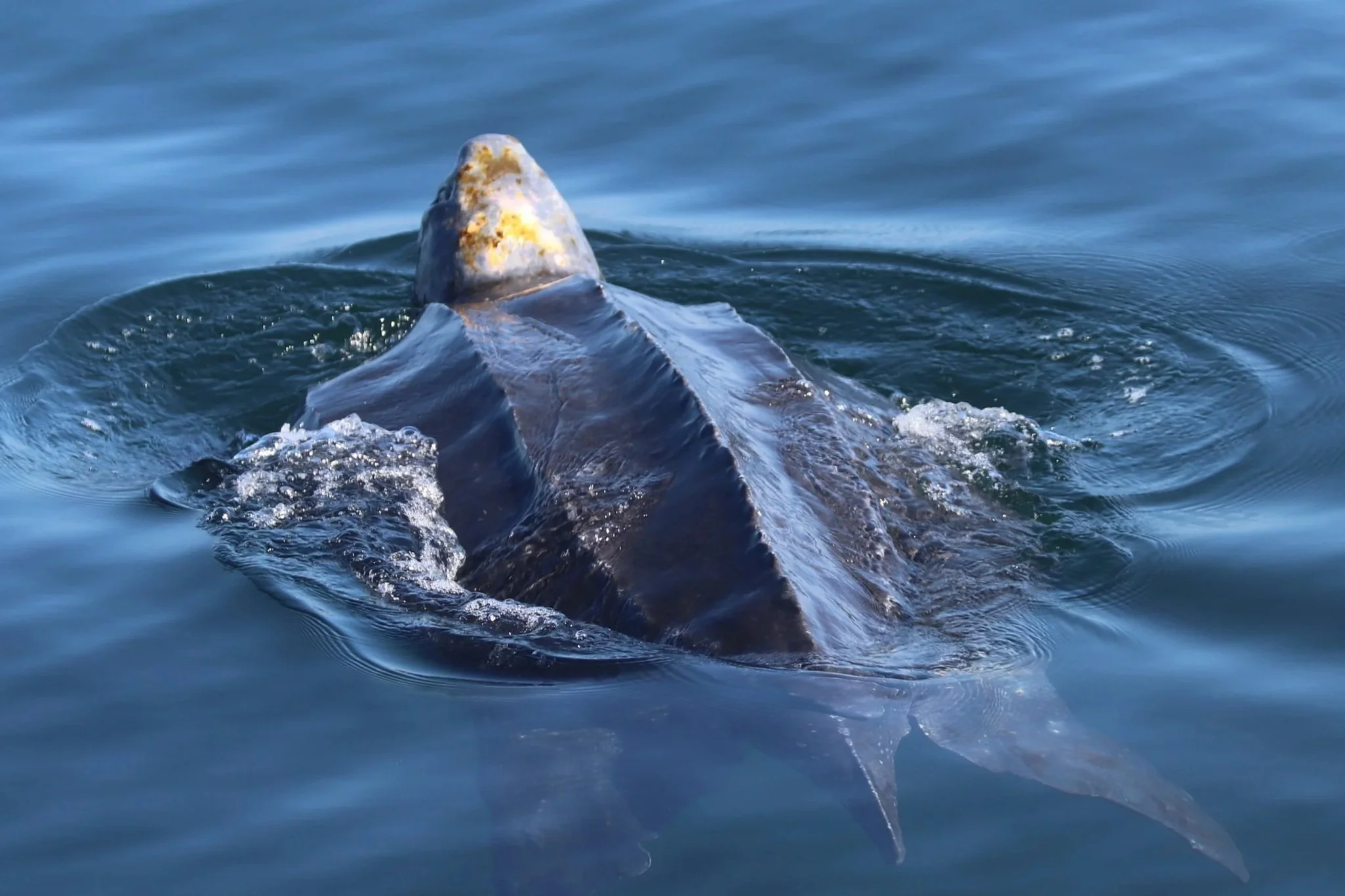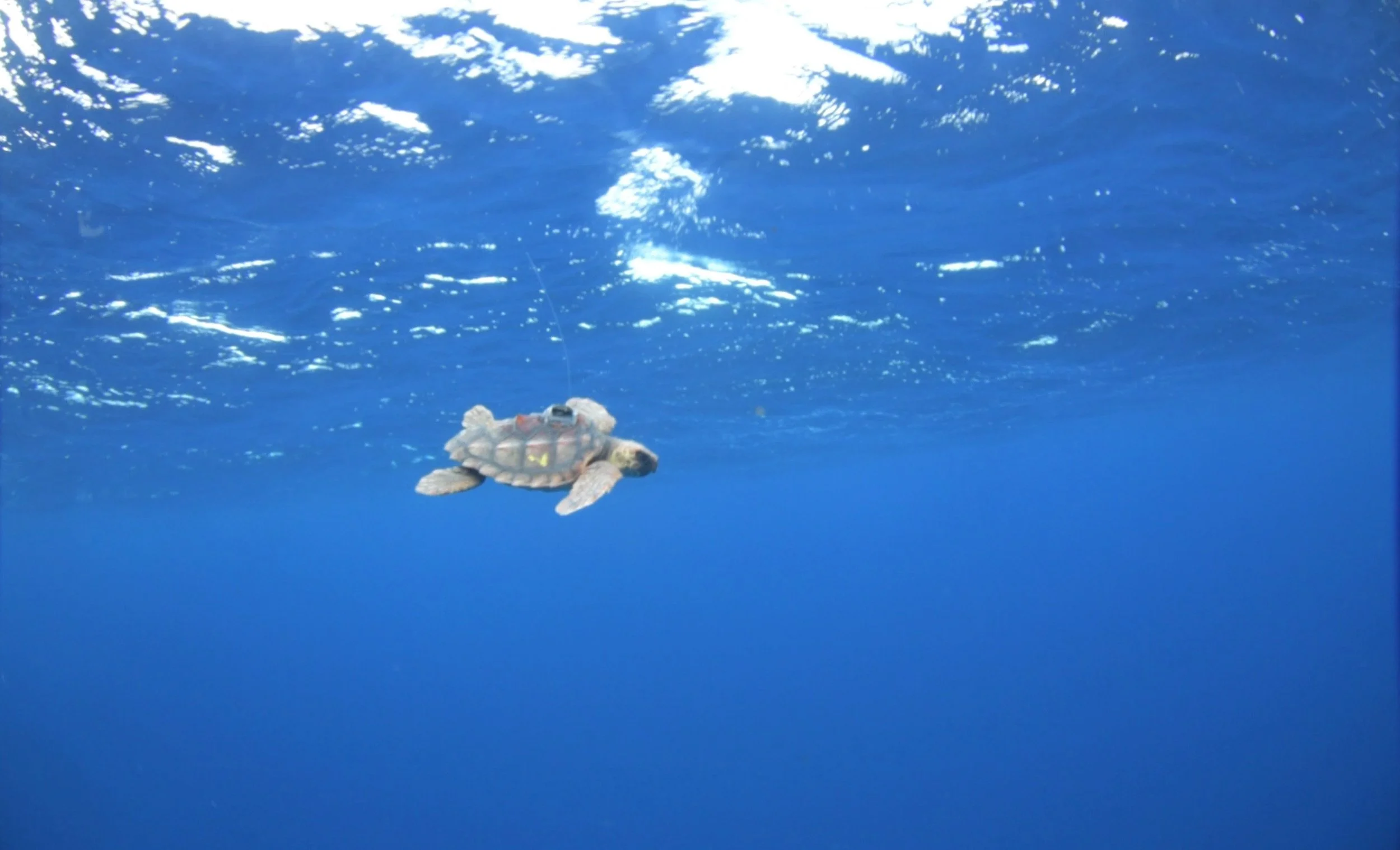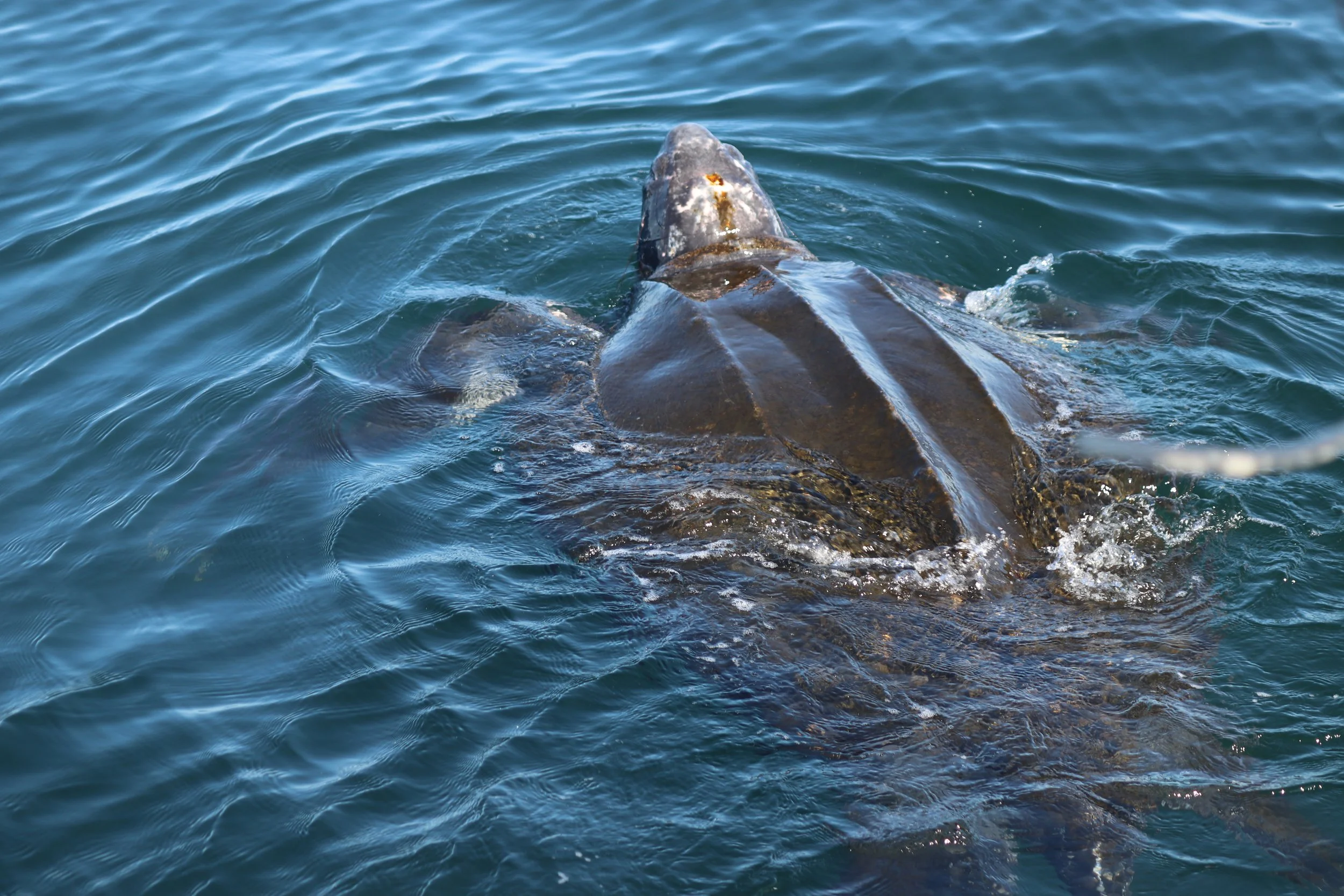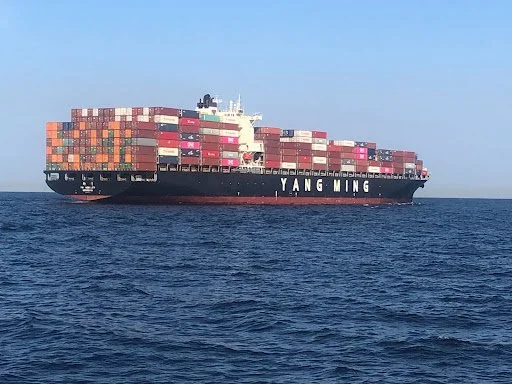Emeline McMann-Chapman is an Upwell Research Assistant. She assists with collection and analysis of stranding data on cold-stunned sea turtles on the Pacific coast. She recently had the opportunity to assist Upwell and NOAA’s leatherback tagging team in Monterey Bay.
Update from the field: The little turtle that could
In late November, 2021 Upwell deployed six prototype micro-satellite tags on juvenile loggerheads in the Azores. Despite the estimated 80 day tag lifespan, one of the solar powered tags continues to transmit over 150 days later! The tag is carried by the smallest of the group of loggerheads who was named Peniche.
Unraveling the Mystery of the “Lost Years” in the Azores
Bon Voyage, Bumpy!
In October of 2021, Upwell and our partners from the National Oceanic and Atmospheric Administration (NOAA) tagged one of the largest leatherbacks ever encountered in the California Current foraging zone weighing in at 1,419 pounds! This massive male leatherback was dubbed “Bumpy” because of the distinctive bumps on the rear of his carapace, which were likely caused by a prior ship strike. Find out more about where Bumpy has traveled.
PRESS RELEASE - Massive leatherback sea turtle satellite tagged in California waters
Local Gifts Can Help Turtles This Holiday Season
We all know buying local reduces carbon emissions and can help combat climate change, but did you know it can also help reduce threats to sea turtles? International shipping often relies on the use of massive cargo ships to transport goods across our oceans. Sea turtle migration paths can intersect with vessel traffic and nearshore shipping lanes can overlap with important foraging habitats.
Novel tracking technology sheds light on leatherback “lost years”
New technologies are finally shedding light on one of the greatest mysteries in sea turtle biology. Using prototype “micro-satellite” tags specifically designed to fit juvenile leatherback turtles, Upwell and Florida Atlantic University researchers released eighteen captive reared juvenile leatherbacks to track their movements off the coast of Florida and shed light on the “lost years” phase of their lives.
Welcoming back California's leatherbacks
Learn about the female turtle tagged by NOAA and Upwell in 2020 whose transmitter is still reporting. She was tagged in September 2019, and she returned to same area where she was tagged in the Gulf of the Farallones this year on 31 July 2020. It’s exciting when we see one of these movement records close the loop! Additional leatherback sightings in the Monterey Bay have been reported recently.
Studying Turtles at Sea Offers Deeper Insights
Data collected at nesting beaches give us only a brief glimpse into sea turtles’ intricate life histories. Satellite tags are one of the best tools available to collect data on sea turtle movements and behaviors in marine habitats. But where tags are deployed matters. Deploying tags at nesting beaches means we are limiting our research scope to the females within a population that are nesting in a given year.
Saving Sea Turtles with Technology
You might not think of someone behind a desk as working on the frontlines of sea turtle conservation, but Upwell’s Oceanographic Researcher, Tony Candela is doing just that. Tony is incorporating mathematics and oceanography to simulate the movements of hatchling and juvenile sea turtles to advance protections for them at sea.















